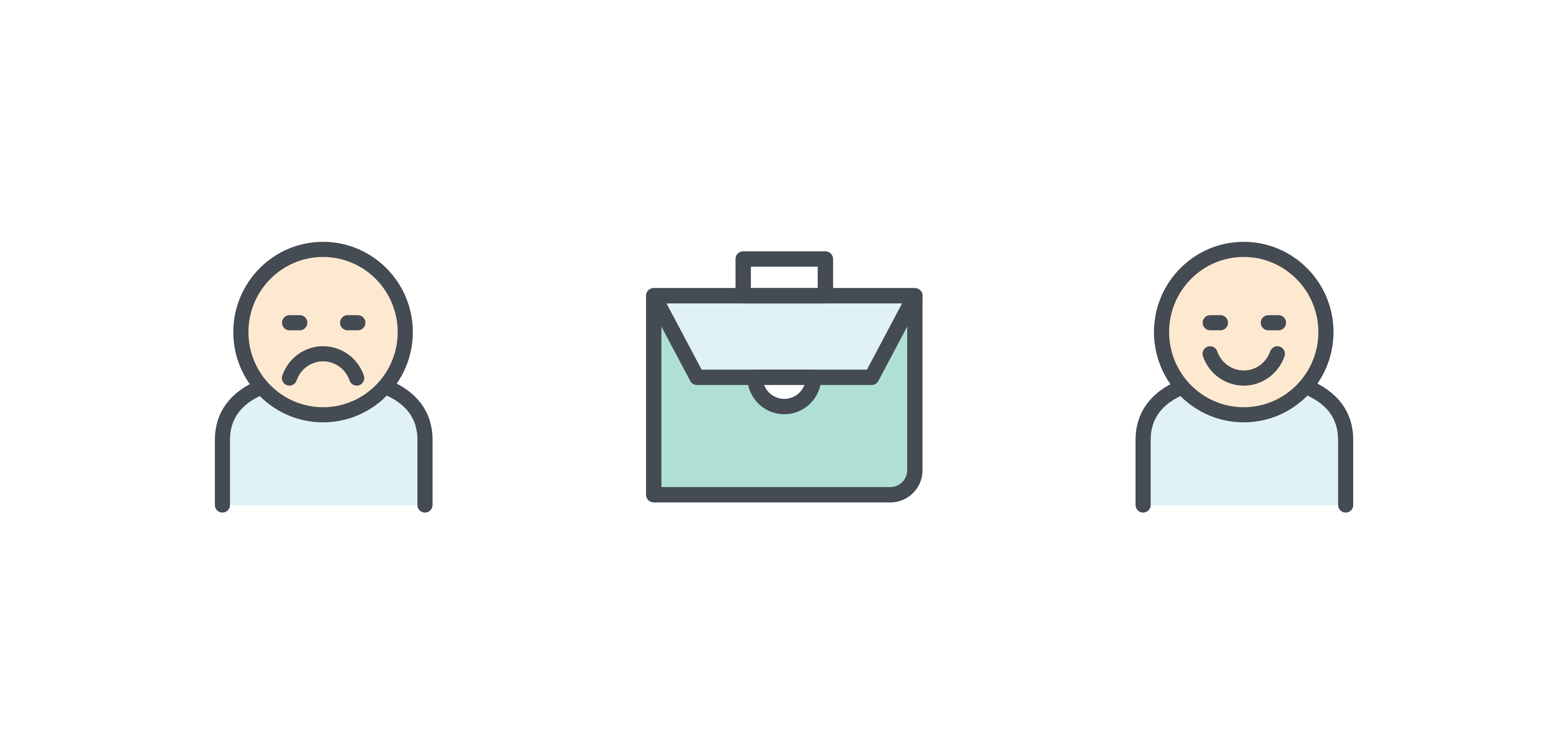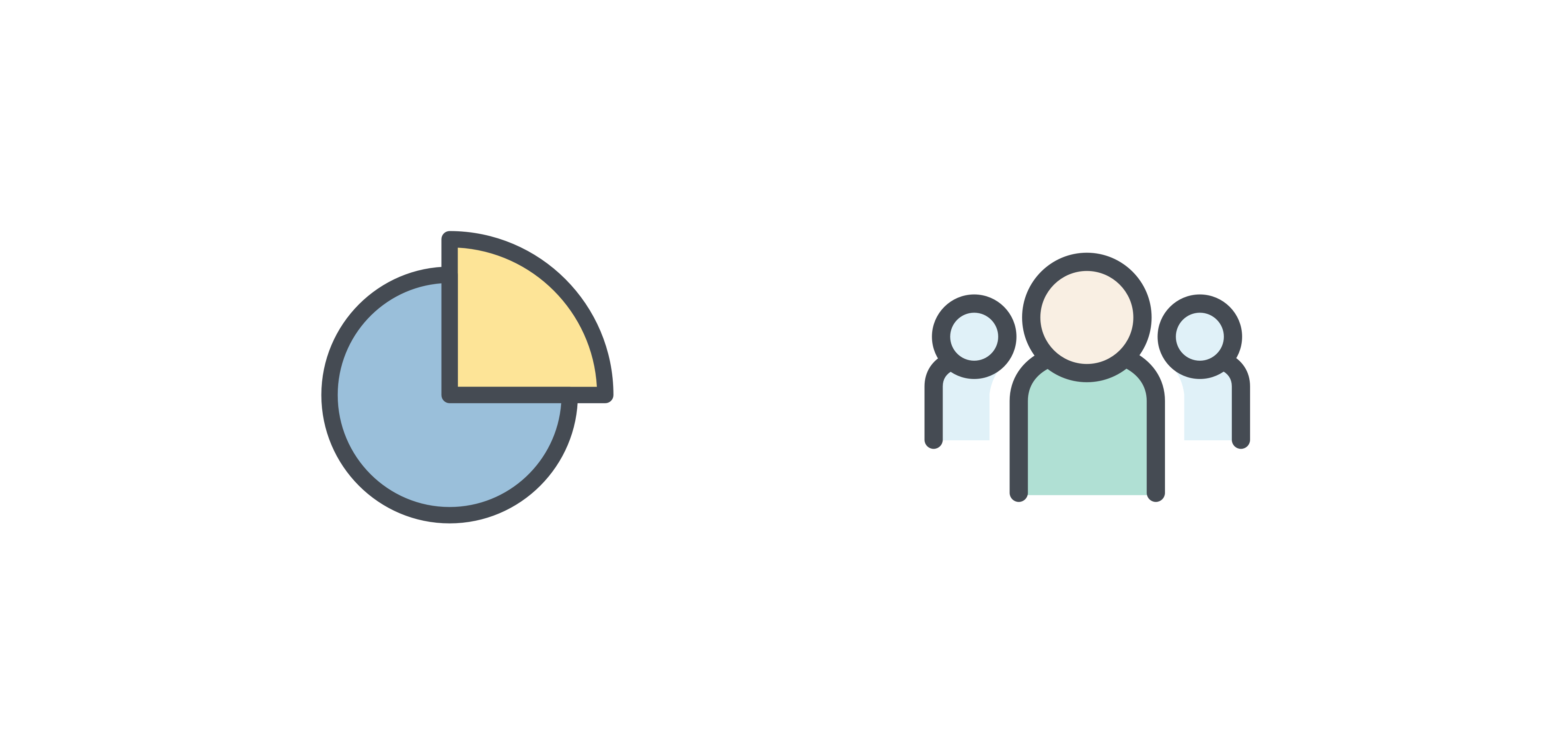How To Get A Great Job By Solving Their Problem First
Jan 15th, 2018 - Written by Andree Huk
Being lucky is great but would you not want to increase your odds tremendously to get this one job? Of course. Allow me to ask you this:
Would you rather hire someone for a project who
- does not know anything about you/the project or someone who
- can relate to you, asks about your plans, what you want to achieve and that the project is about?
Summary
- Hard and soft skills are great to have, but only one part of the equation
- Job hunting is fundamentally about solving a user problem: The one of the company that is hiring
- Designers take pride in being user-focused, user-centered, but often do not see the company as the actual user that wants to solve a problem
- Competitive advantage: Be user-focused (read company-focused) when job hunting
- Be valuable for the company: Do not talk about yourself only, inquire about the company as detailed as possible
Hard skills and soft skills are obviously very important. You can work to improve both of course. However, it is much easier to improve hard skills in the short terms than soft skills. Furthermore, improving soft skills while sitting at home alone is hardly possible.
Neither hard nor soft skills are the only decisive factors. What else does matter?

Exchange of value no where to be found?!
Over the past 3 years of running blended.io, I have seen many many applications for either engineering or design roles. The themes that keep popping up across the board, even for non-junior roles, are such as “I want to learn new things and gain more professional expertise”, “I am a great team player” or “I am hard working”.
Oftentimes unfortunately, applicants do not offer sufficient value in return. This situation on the job market offers tremendous competitive advantage.
You may notice the issue here but such statements surprise me each time. Leaving junior roles as side, I really wonder what the applicants are thinking. Why would a company hire someone whose main goal is to improve their own state of affairs? Quite selfish don’t you think? What is the value for the company? As I pointed out above, the company wants to solve one of their problems at hand - and they know that they cannot do it alone.
Across the 200+ applicants most people hardly ever ask questions or inquire about the needs of our company blended.io. Less than 25% of applicants go into details and lay out how their experience relates to job at hand. Yes, that could still be considered “Me, me, me” but they do relate to the problem the company faces.
An exchange of value should be the goal of either party in the short and long term. Both parties hope to gain more from the collaboration than what is exchanged. Otherwise, they would not be in business.
Therefore, as the company is fundamentally driven to turn a profit, it expects to reap a financial benefit that is greater than the salary (the cost) it pays to the employee. On the other hand, the employee expects the salary (as the value) to be higher than the distributions she makes (you may want to read that again). Otherwise the employee would ask for a higher salary.
As Warren Buffet famously said, “money is what you pay, value is what you get”.
Oftentimes unfortunately, applicants do not offer sufficient value in return. This situation on the job market offers tremendous competitive advantage.
Solving the problem
What many people continuously forget the company’s side of the equation.
Lean UX, design sprints, design thinking or user-centered design: whatever you name it, designers take great pride in being user-centered, user-driven, user-focused - in everything they do, of course.
Interestingly and as you might expect designers also get caught up in the Me, Me, Me of job hunting, that is: Why am I such a good fit; my experience fits the job description very well because of XYZ; I am a great team player; I want to get better in what I do.
Why is that the case?
Firstly, because it is so simple to forget about the other persons’ problem (here the company’s problem). We all do it (or have done it at some point). However, the ones that outperform reflect on the their own actions and behaviours, recognise the missing pieces and levers of competitive advantage.
Secondly, it is hard to get the internal perspective, the issues the company in question faces. I have to admit that this is a tricky one but not the end of the line.
In fact, it is not about You. It is about solving a problem for a user. The user here is the company that one applies to. That company in question simply wants to fill a role, read: solve one of their problems, e.g.: to be able to serve more clients, to build the product faster in order to hit business milestones, to get the word out faster than they are able to at the moment.
In all fairness, situations do exist in which even a truly problem-focused applicant will not be successful: An applicant that lacks any skills that the job opportunity requires.

Putting yourself in their shoes
Solving user problems is what designers do best. Many forget though that looking for a decent job is really nothing different: solving a problem - the company’s problem.
In order to solve user problems, designers start by getting a proper understanding of the user in question. In our case, the job hunter has to get a deep understanding of the company and its hiring problems.
The below should entice to come with the right questions:
- What is the real need internally?
- Why cannot they solve it with resources they already have?
- What are they specifically looking for?
- Has the role been online for some time, why have they not filled the role yet?
You are right to point out that it might be hard to find out what the real need of the company is apart from the job posting itself. The reasons for this could be the location of the company office (e.g. another city or country) or because the company does not share much about them online.
Generally speaking though, would you agree that solving real user problems is fundamentally damn hard? I assume that you would. Solving the company’s problem of finding the right candidate is no difference. Some food for thought to get you well positioned:
- Does a friend of yours know someone at the company? Kindly ask for an introduction and invite her out for lunch.
- Even better would be to chat with HR. Since they have to eat lunch as well, why not invite her out for lunch.
- Create a list of recruiters and search their profiles for what they share, talk, tweet about. That way you will be able to interact with and get to know them
- You can do the same for employees on twitter. Research, interact, engage
- For a more specific hint: You could review their web/mobile app in regard to interaction or visual design, do a usability analysis or look for bugs. If you find something meaningful, you will surely have their ear
You may now think: Holy, how do I do this for 20+ companies? The more roles one has on its plate, the less detailed each research will be, of course.
In order to close the circle, imagine you would hire someone to help you on a project. Would you prefer an applicant who
- does not know anything about you/the project or an applicant who
- can relate to you, asks about your plans, what you want to achieve and that the project is about?
Now, you may see the initial question from a different point of view.
If I can leave you with one thing, it would be this: Be incredibly interested in what the company does and why they want to fill that role in question. Take their perspective. Solve their problem.
Want to come up with a new digital product, expand your existing business, stay competitive? What's your next step?
Get in touch with Andree Huk
at +49 30 5557 7174 or [email protected].